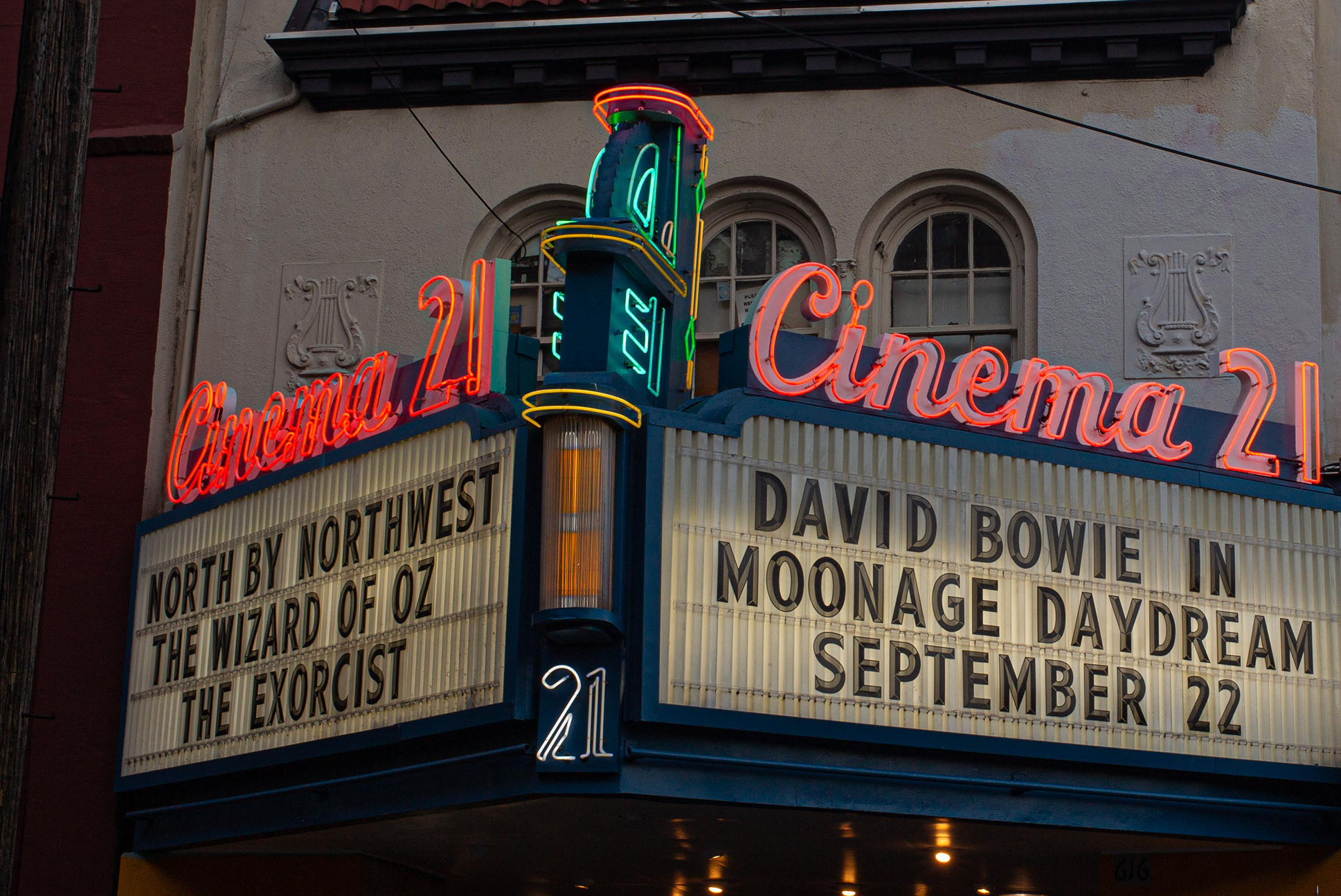M. Ward on His New Billie Holiday Tribute Album Think of Spring

Image: Holly Andres
Portland singer-songwriter M. Ward knows a thing or two about holiday music. As half of She & Him, he's put out two Christmas records with Zooey Deschanel beloved by mid-millennials and Urban Outfitters shoppers the world over. This December, though, he's flying solo, with a collection of covers from Billie Holiday's 1958 record Lady in Satin called Think of Spring. Spring, which drops December 11, is spare and haunting—just Ward's guitar and gently grizzled vocals. It's also his second release of the year. Back in April, he dropped an original LP called Migration Stories that took inspiration from his grandfather's migration from Mexico to the U.S. in the early 1900s.
We caught up with M. Ward to discuss his lifelong fascination with Holiday's music, unique recording techniques for Think of Spring, and decision to drop two albums in one year. (Proceeds for Think of Spring will go to education-focused nonprofits Inner-City Arts and DonorsChoose.) Below is a transcript of our conversation, lightly condensed and edited for clarity.
Think of Spring is your second record of the year. Was the choice to put out a second album born of quarantine boredom, or were you always going to put this record out in 2020?
Well I recorded the record in 2019 on my four-track mainly, and I was able to finish it in 2020, partly because there was a lot of time. A lot of tours were canceled. I’ve never released two records in the same year, but I’ve never released music during a pandemic, so it’s all one big giant experiment.
On the subject of big experiments, what moved you to release an album of acoustic guitar Billie Holiday covers?
[Lady in Satin] got under my skin at a really impressionable age. I was in my late teens, early 20s, and most of my friends were listening to Anthrax and Megadeth. I remember looking through guitar magazines, and I was interested in Metallica to a certain extent, but I heard this Billie Holiday record, and it changed how I viewed timeless music and steered me away from Guitar World magazine.
Talk about the recording techniques that you employed on this record. A lot of it was done on a Tascam, yes?
Yeah, when I was 15, I bought this four-track cassette recorder, a Tascam Portastudio. It’s still been my favorite way of getting ideas down. As a high schooler, I was inspired by the sounds that I was hearing on Daniel Johnston’s cassette recordings in addition to older recordings like Robert Johnson, which was just acoustic guitar and voice. That gave me confidence to continue recording on my four-track, just to make tapes myself and with my friends. I still crave that sound when I’m listening to the radio. I feel like the digital revolution has still taken us away from my favorite parts of music, which is the human side, and I still feel like analog is the best way to record.
All that to say, yeah, most of the record was recorded on my four-track, and I’ve never released a record like this before.
How does it contrast with the way you typically record an album?
Normally it takes me a year, sometimes two years, to collect ideas using GarageBand and four-track, and then I take it to a proper studio and start working with other musicians and drummers and engineers, and that’s how I’ve made every record I’ve ever made. This record is different because I went direct from four-track to the studio and there was no rerecording of the songs. The four-track technology is the most important part of the sound of this record. To me, it gives it a personal sound.
On that note, some of these songs have unique guitar tunings—they sound very different, obviously, than the Billie Holiday recordings. I regret to inform you that I know almost nothing about guitar tunings, but I am curious what the most interesting puzzle for you to solve was, arrangement-wise. When was a moment you knew you’d struck gold?
One of the first songs I rearranged for acoustic guitar for this record is called “You’ve Changed,” and I just tried this opened B-flat tuning. I definitely would not expect anyone to be too interested in this side of things, but having said that, I will very happily talk about guitar tunings all day to anyone who wants to talk about it.
It’s been this thing I’ve discovered through my love of Joni Mitchell and Sonic Youth and John Fahey. When you approach the guitar with an entirely different tuning, then the guitar becomes a new instrument, and you immediately are playing a progression—say, B-flat, E-flat, F—in a way that’s probably never been played before. So there’s some excitement in that. And you end up creating new melodies also. It’s a way of keeping the instrument alive and mysterious and eternally new, like a fountain of youth.
How, specifically, do you think that helped you access and shape and perform these Billie Holiday tracks?
For me, just hearing the chord B-flat with open strings is enough to get me excited. You turn on the radio, and you hear these chords so many millions of times that you start to get a taste for something new. It’s the same thing with harmonies that are very neat and tidy. I start to lose my patience with those voicings. For me, it’s just experimenting with ideas that get me excited about performing and recording, and experimenting with guitar tunings has been a part of that.
What was the most challenging song to reshape on this record?
There’s a song called “The End of the Love Affair” that I swapped out for a different song from that same session called “All the Way.” I just put them side by side, and I preferred “All the Way.” “End of the Love Affair” is a beautiful song, but if I’m not able to put my own spin on it, then I normally save that for a B-side. Maybe I’ll release those someday. But the most interesting songs for me are the ones that seem to have a life of their own completely separate from the original.
What’s your favorite Billie Holiday song that’s not on this record?
Maybe “What a Little Moonlight Can Do,” which she recorded as kind of a young woman. It’s a completely different tempo and vocal approach than this record Lady in Satin. The combination of sorrow and sweetness is the thing that really stands out for me, it’s just kind of this lethal combination, and I still can’t stop listening to it.
When you were putting this together, were you looking to any other tribute albums as a blueprint?
I was doing this independent of any other sort of tributes, but I will say that about 10 years ago, I recorded a record called Post-War here in Portland, and I tried one of the songs from Lady in Satin called “I’m a Fool to Want You” as an instrumental. I just did it for fun, thought “let’s see what happens if we try this,” and it ended up being one of my favorite songs on that record. We played it a lot on that tour, and the reaction was always really interesting. That might’ve been one of the first inspirations to take all the songs from Lady in Satin and experiment with them and see if we can boil all of these elements on her recordings into just acoustic guitar and vocal and see what happens.
Talk about the title. It’s a snippet of a lyric from “I Get Along Without You Very Well,” but why call the whole record “think of spring”?
It’s just a killer lyric, and to me, it seemed like an especially good title for having endured the year 2020 as we all have. Looking forward to better days.
The press imagery around the album has you at the Christmas tree—is there any reason you’re putting this out around the holidays?
The sound of the record is very sparse, and I wanted the artwork to be very sparse. That, to me, gives it an obvious winter feeling, and it seemed like winter’s the right time to put this out, especially with a title like “think of spring.”
You mentioned at the top of the interview the idea that Billie Holiday taught you something about timeless music. What do you think that is?
I guess a good way for me to answer that question is to talk about the more technical side of recording music. When you start out, you don’t know anything about gear. When you start recording at different studios, you start to learn about all of this gear that is available to you, and that is endless. And the more gear you have, the farther it takes you away from the song, unless you have a great producer, and it’s very hard to find that.
Timeless music, to me, takes you somewhere out of the studio and into the story. And in the case of Lady in Satin, it’s her vocal that is the heartbeat. If you can connect on an emotional level to what the singer is trying to say, then the production is a success, and the production becomes almost invisible. I guess that’s how I would answer this question.
It is now, officially, end-of-year list season. What releases spoke to you this year? Any that you wish more people had clocked?
Yeah, the singer of Big Thief, Adrienne Lenker has a great new record [called songs]—I really love her songs, love her voice. First name that comes to mind. I also like this singer Jenny O., [who released an album called New Truth this year].




